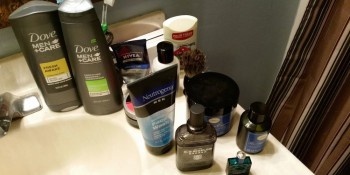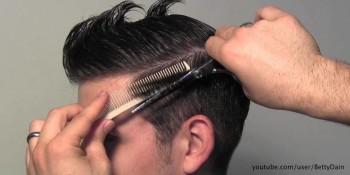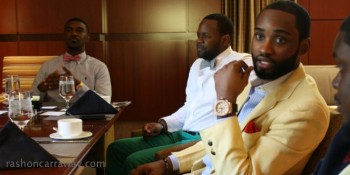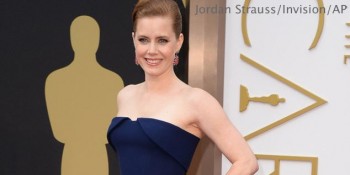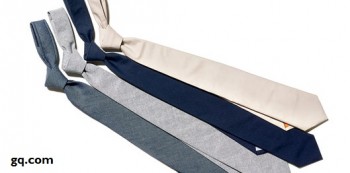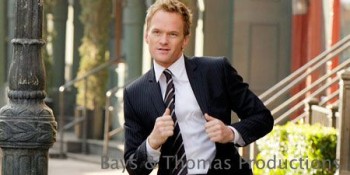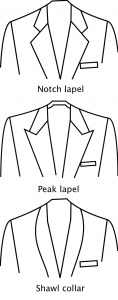The Modern Urban Gentleman is subjected to a fair amount of ridicule for the number of grooming products in his bathroom. Many overnight vacations include the observation that he has packed more soaps and lotions than his naturally beautiful wife. Nonetheless, the care of a gentleman’s skin and hygiene is of utmost importance.
Choosing grooming products is a highly personal decision, but a few ground rules and a bit of advice can lead the aspiring gentleman down the path of good choices. No man will be able to explore all there is to sample in these areas of men’s care, so use this peek at the Modern Urban Gentleman’s shelf to serve as a launching pad for your own exploration. Share your experiences and recommendations in the comments below.
Shampoo/Conditioner
There are countless theories about how frequently to wash one’s hair, which products to use and which to avoid, and what is an acceptable price to pay for shampoo and conditioner. The Modern Urban Gentleman goes simple with these items, using a combined shampoo/conditioner from Dove. Different men have different needs, in terms of volume control and moisture content, so your mileage may vary.
Recommended product(s): Dove Men+Care Fresh Clean Fortifying 2-in-1 ($4)
Body wash
The cleansing of the body, an ancient and sometimes spiritual ritual, is fertile ground for a boxers-or-briefs level debate between advocates of body wash and proponents of bar soap. This gentleman was raised on bar soap and was loath to loosen his grip on his Zest, but making the switch to a body gel had no psychological aftereffects. It seems the pendulum has swung in recent years in favor of body wash among most cultured men. As with hair, different physiologies require different qualities in a cleanser. In the case of the Modern Urban Gentleman, dry skin is a frequent problem, so moisture is paramount.
Dove Men+Care Fresh Awake body and face wash with Micromoisture ($5)
Face wash
While the Fresh Awake body wash recommended above can also serve as a face wash, the face is worthy of special treatment to combat acne, blackheads, and other unpleasantness. The dividing line in face washes is the inclusion of microbeads. The tiny, abrasive balls give a feeling of extra cleanliness, but are they truly cleaning better than a simple wash? If the gentleman has not had the microbead experience, try Every Man Jack, a favorite throughout the men’s health scene.
Every Man Jack face scrub in signature mint ($6), Nivea Men original moisturizing face wash ($5), Neutrogena Men invigorating face wash ($6)
Shaving products
When a gentleman takes a blade to his face, he had best invest in top quality tools — and that may include some he never even knew existed. The Modern Urban Gentleman officially endorses The Art of Shaving full size kit ($210), which will provide three key friction-reducing and -reparative solutions, plus a pure badger hair brush (a $180 value by itself). If the reader cobbles together his own set of shaving products, be advised: avoid aftershave with alcohol; it will sap your skin of any and all moisture and further irritate, instead of soothe, your face.
The Art of Shaving pre-shave oil ($25), The Art of Shaving shaving cream ($25), The Art of Shaving after-shave balm ($40)
Deodorant
Deodorant is a necessity, but antiperspirant can be a liability. The aluminum compound found in most every antiperspirant on the market interacts with the oils of a man’s body to stain the underarm of his clothes. (Check your “white” undershirts for evidence.) The Modern Urban Gentleman has found the best antiperspirants to be general physical fitness and a seasonally appropriate wardrobe, while the best deodorant comes down to pure personal preference.
Old Spice fresh collection, Fiji ($4)
Moisturizing face lotion
Gentlemen, aftershave is not enough. Shave, get dressed, then return to the bathroom to apply a moisturizing face lotion. After all, the aftershave did nothing to help your dry forehead, and the tender skin of the neck can use some H2O reinforcement. Face lotion is also a perfect delivery system for daily sunscreen protection without the slimy hands or boardwalk smells.
Neutrogena Men triple protect face lotion with sunscreen SPF 20 ($7), Nivea Men original protective lotion broad spectrum SPF 15 sunscreen ($6)
Hair styling product
Upon the advice of Ms. Brittany, his official hair stylist, the Modern Urban Gentleman uses a texturizer to mold his daily coiffure. Seek the input of your own stylist, whom you surely acquired after our previous hair care discussion.
Mitch by Paul Mitchell Reformer strong hold/matte finish texturizer ($20)
Cologne
Gentlemen, did you know your girlfriend’s favorite girly lotion store also sells men’s products? Bath & Body Works dedicates one of its shelves to the skin care of the less fair sex, including offering the wares of the oldest apothecary in the United States, Greenwich Village’s C. O. Bigelow. No more hiding in the Verizon store next door while she hunts down the Sweet Pea body lotion. The Barber cologne in elixir black is a fine aroma, though its spray mechanism requires special measures to avoid over-scenting. The 2.5 ounces will last months.
This gentleman has never gone in for high-priced designer colognes but scored a free sample of Versace Eros. The scent is tantalizing and has lived up to the potentiality of its name. Your wife can purchase it, along with your Art of Shaving kit, at Ulta.
Versace Eros (1.7 oz for $62), C. O. Bigelow Barber cologne, elixir black (2.5 oz for $20)
That list may look daunting, but once the gentleman has made all the proper purchases and set the routine, the hygiene and maintenance become a relaxing custom. Not only will you feel better about yourself, knowing your skin is clear and moist and your scent is alluring to all, but others will appreciate your efforts as well.
